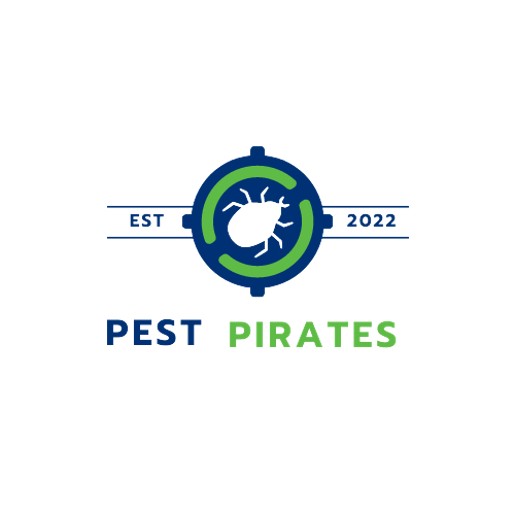
Preventing Termite Infestations
Maintaining a termite-free home is a continuous effort, even after professional treatment. By implementing effective prevention strategies, you can protect your home against these destructive pests. Here are some expert tips to help you fortify your home’s defenses both outdoors and indoors.
Outdoor Prevention Strategies
Your first line of defense against termites involves outdoor strategies to make your home less appealing to these pests.
- Elevate Wood Surfaces: Ensure that all wood components of your home, such as siding, decking, and doorframes, are at least six inches above ground level. This helps prevent wood-to-soil contact, which can give termites easy access to their food source. You may need to regrade the soil or modify wooden structures to achieve this clearance. Remember, even pressure-treated wood can succumb to termites (University of Kentucky).
- Manage Moisture: Termites thrive in moist environments, so it’s critical to divert water away from your home’s foundation. Keep gutters and downspouts clear and functional, and repair any leaks promptly. Ensure that the ground near your foundation slopes away from your home to prevent water accumulation.
- Ventilate and Cover Crawl Spaces: Reduce humidity in crawl spaces by ensuring proper ventilation. Building codes typically require one square foot of vent opening per 150 square feet of crawl space. Clear any blockages from vents and consider installing a vapor barrier, like polyethylene sheeting, over the soil in crawl spaces to further control moisture (University of Kentucky).
For more detailed information on landscaping practices that can deter termites, visit our section on landscaping practices to deter termites.
Indoor Prevention Methods
The fight against termites continues inside your home. Here are some indoor prevention methods to keep these pests at bay:
- Professional Termiticide Treatment: If your home has never been treated for termites or if it’s been some time since the last treatment, consider having a professional pest control firm apply a termiticide. This acts as a long-lasting barrier to repel termites. To ensure continued protection, maintain the warranty by paying any annual renewal fees. This usually entitles you to free retreatment should termites reappear (University of Kentucky).
Combining these outdoor and indoor prevention methods can greatly reduce the risk of a termite infestation in your home. Remember, consistent vigilance and proactive measures are key to keeping your home safe from termites. Stay informed about the signs of termite infestation and consider regular termite inspections to catch any issues early. For additional guidance on termite prevention and treatment, explore our resources on everything from diy termite control health precautions to environmental impact termite treatments.
Effective Termite Treatment Options
To maintain a termite-free home after initial treatment, it’s vital to understand the effective termite treatment options available. Both professional and eco-friendly solutions can be implemented to protect your home from these destructive pests.
Professional Treatments
Professional termite treatments are the most reliable way to combat termite infestations. Approved treatments include conventional barrier treatments and termite bait systems. Termiticides used for barrier treatments must be specifically labeled for that use, ensuring the safety and effectiveness of the application (EPA).
HomeTeam Pest Defense recommends three top termite treatment methods: soil treatment, wood treatment, and bait systems:
-
Soil Treatment: This method involves creating a protective barrier in the soil around your home. It’s designed to eliminate subterranean termites before they can reach the structure, serving as both a barrier to future infestations and a way to eliminate termites inside the home as they encounter the treated soil (Pest Defense).
-
Wood Treatment: This approach targets the core of the home by making the wood inhospitable to termites. Termiticides are applied to vulnerable wood surfaces, creating a shield. When termites ingest the termiticide, they are exterminated, reducing their population and preventing future infestations.
-
Bait Systems: Bait systems work by allowing termites to unknowingly carry poison back to their colonies, effectively destroying the colony from within. Pest control professionals install bait stations around the home’s perimeter, offering a long-term solution to eliminate termites and protect your home against future invasions (Pest Defense).
For more information on the average termite treatment costs and the duration of termite treatment, you may want to explore our related articles.
Eco-Friendly Solutions
For homeowners interested in minimizing the environmental impact of termite treatments, there are several eco-friendly solutions available:
-
Essential Oils: Oils such as clove, neem, tea tree, and orange oil contain compounds that repel and kill termites. A mixture of water and these essential oils applied in areas prone to termite activity can create a protective barrier against these pests. Regular application is key to maintaining this natural defense (Varsity Termite and Pest Control).
-
Beneficial Nematodes: These parasitic worms feed on termites and can be introduced into areas with termite activity. They seek out and eliminate termites efficiently and continue to reproduce and target termites until the infestation is eradicated.
Both of these eco-friendly methods can be part of a broader strategy to get rid of termites naturally. It’s important to monitor the effectiveness of these treatments and consider incorporating them with other methods, such as termite-resistant building materials and regular termite inspections, to ensure long-term termite management.
When dealing with termites, it’s essential to choose a method that aligns with your home’s needs and your environmental values. Whether you opt for professional treatments or eco-friendly solutions, staying proactive and well-informed will help you keep your home termite-free for years to come. For additional advice on termite treatment, visit our articles on diy vs professional termite treatment, child and pet safety termite treatments, and environmental impact termite treatments.




